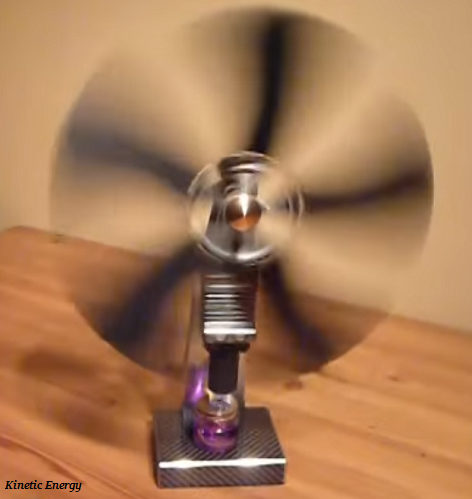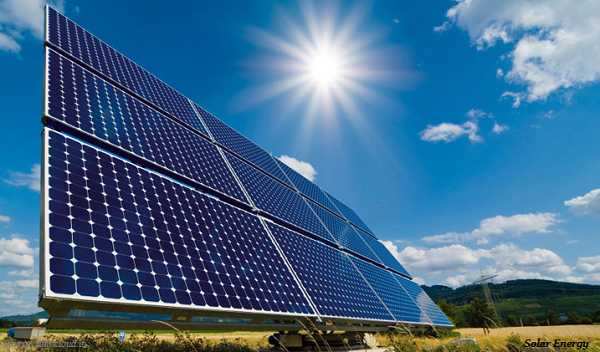
- Physics Notes for UPSC IAS Prelims (Part I)
- Physics - Home
- Physics - Force and Pressure
- Physics - Friction
- Physics - Some Natural Phenomena
- Physics - Motion
- Physics - Force and Laws of Motion
- Physics - Gravitation
- Physics - Mass and Weight
- Physics - Work and Energy
- Physics - Light
- Physics - Reflection and Refraction
- Images Formed by Spherical Mirrors
- Physics - Refraction of Light
- Physics - Spherical Lenses
- The Human Eye & Colorful World
- Refraction of Light Through a Prism
- Physics - Electricity
- Chemical Effects of Electric Current
- Magnetic Effects of Electric Current
- Physics - Electric Motor
- Physics - Source of Energy
- Physics - Sound Part I
- Physics - Sound Part II
- Speed of Sound in Different Media
- Physics - The Solar System
- Physics - Stars and The Solar System
Physics - Work and Energy
Introduction
When acting (applying force), there is a displacement of the point of application in the direction of the force, is known as work.
The term work was first introduced by the French mathematician GaspardGustave Coriolis in 1826.

Work done by a force acting on the object is equal to the magnitude of the force multiplied by the distance moved in the direction of the force and it is calculated as −
Work done (W) = Force (F) × Displacement (s)
Work has the only magnitude and no direction.
The SI unit of work is the joule (J).
Energy
Energy can be converted in form, but cannot be created or destroyed. For example, producing electric energy from solar energy, etc.
The object which does the work loses energy and the object on which the work is done gains energy.
Further, the object that possesses energy can exert a force on another object to transfer energy from former to later.
The energy possessed by an object is therefore measured in terms of its capacity of doing work.
The SI unit of energy is joule (J).
Forms of Energy
Following are the major forms of the energy −
Potential energy
Kinetic energy
Heat energy
Chemical energy
Electrical energy
Light energy
Let’s discuss each one in brief
Potential Energy
The energy, possessed by a body by virtue of its position relative to others, is known as Potential energy.
So, potential energy is the stored energy in an object. For example, gravitational potential energy, elastic potential energy, electrical potential energy, etc.
The SI unit of potential energy is joule (J).
The term potential energy was introduced by Scottish engineer and physicist William Rankine.
Kinetic Energy
The energy that an object possesses because of its motion, is known as kinetic energy.

The running/moving body maintains its kinetic energy unless its speed changes (increases or decreases).
The SI unit of kinetic energy is joule (J).
Heat Energy
Heat is a form of energy transferred spontaneously from a hotter to a colder body.
Chemical Energy
The potential of a chemical substance to experience a transformation through a chemical reaction and transform other chemical substances is known as chemical energy. E.g. Breaking or making of chemical bonds, batteries, etc.
The chemical energy of a (chemical) substance can be converted to other forms of energy by a chemical reaction. E.g., green plants convert solar energy to chemical energy (commonly of oxygen) by the process of photosynthesis.
Electrical Energy
The energy, derived from electric potential energy or kinetic energy, is known as electrical energy.
Electricity is normally produced by electromechanical generators at a power station.
The electromechanical generators primarily are driven by heat engines fueled by the kinetic energy of flowing water and wind.
The electromechanical generators are also driven by heat engines fueled by chemical combustion or nuclear fission.
Light Energy
Light is a form of electromagnetic radiation.
Light energy most likely is the only form of energy that we can really see.

Light is transferring energy through the space in a natural way. E.g. solar energy.
Law of Conservation of Energy
Law of conservation of energy states that energy can neither be created nor be destroyed; however, it can be only transformed from one form to another.
According to the law of conservation of energy, the total energy before and after the transformation remains the same.
The law of conservation of energy remains valid in all conditions and locations and for all kinds of transformations.